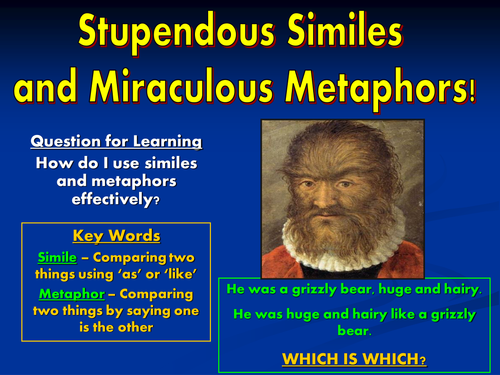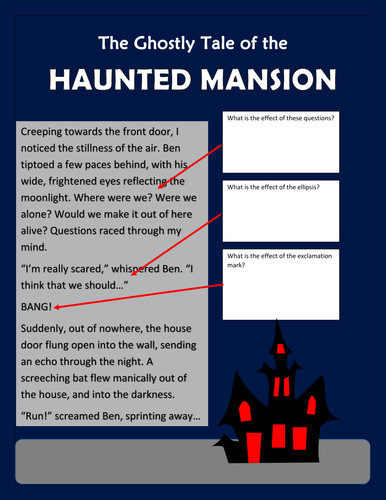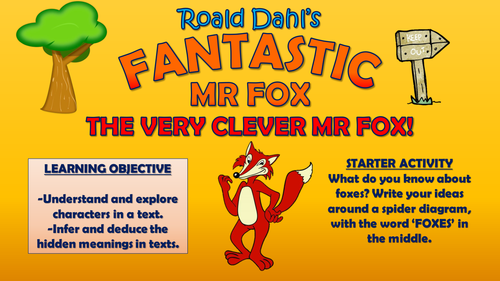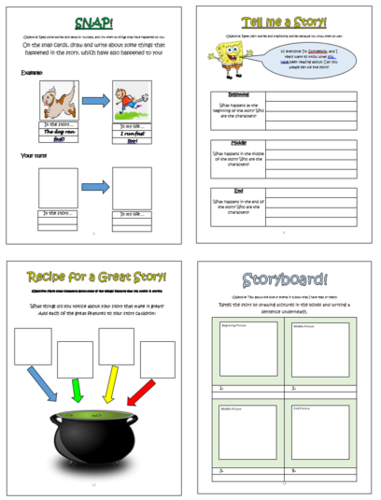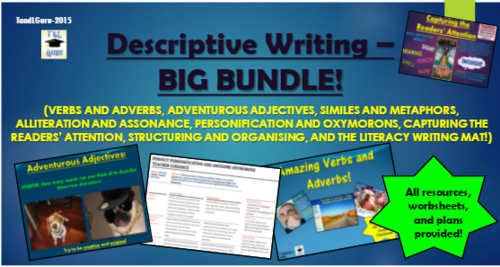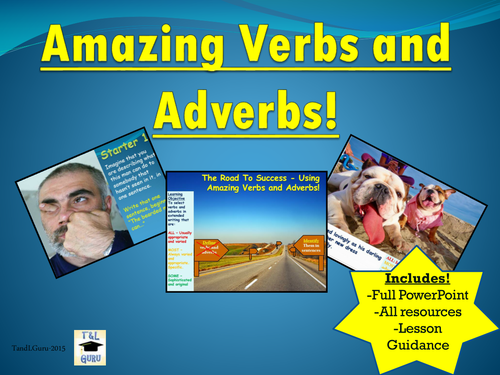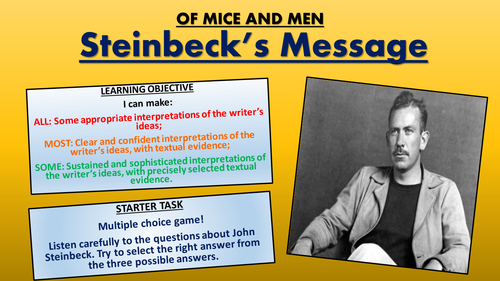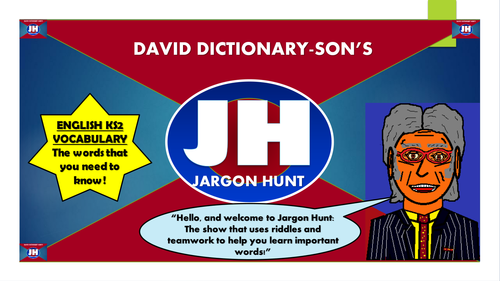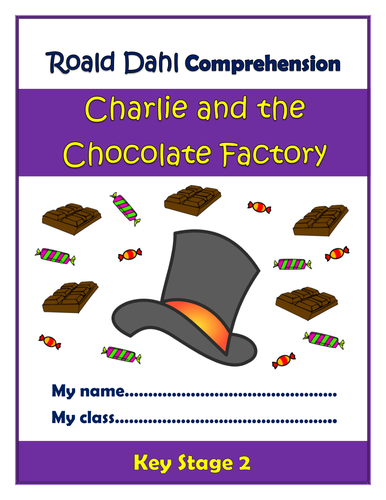
3k+Uploads
1953k+Views
2271k+Downloads
Literacy for early childhood

A Series of Unfortunate Events - The Bad Beginning - KS2 Comprehension Activities Booklet!
This resource booklet contains a wide range of age-appropriate, engaging, and meaningful comprehension activities for use throughout the reading of Lemony Snicket's 'A Series of Unfortunate Events - The Bad Beginning.' Teachers have found them particularly useful in comprehension or guided reading sessions. They are perfect for aiding the progress of children towards meeting the upper KS2 expectations within the new National Curriculum framework. Children love learning from these resources, whilst they are also of great use to teachers, as there is explicit information within each task regarding which comprehension strands the task is designed to demonstrate. They also relate to key extracts, characters, and themes from the story, ensuring that children gain a deep understanding of the text.
Activities within the booklet include:
- 'An Interview with Violet' - to enable students to demonstrate that they can: 'Understand what is read by drawing on information from more than one paragraph, identifying key details that support the main ideas, and using quotations for illustration;'
- 'Snicket's Description' - to enable students to demonstrate that they can: 'Explain meanings of words that they know and ask the meaning of new words. Link the meaning of new words to words that they already know;'
- 'Count Olaf' - to enable students to demonstrate that they can: 'Understand what is read by drawing on information from more than one paragraph, identifying key details that support the main ideas, and using quotations for illustration;'
- 'Figurative Language in 'A Series of Unfortunate Events' - to enable students to demonstrate that they can: 'Discuss and evaluate how authors use language, including figurative language, to create an impact on the reader.'
Plus many, many more activities (the booklet is 21 pages in length!) I've also added it as a PDF in case the formatting differs on your computer.
All images are licensed for commercial use, and are cited on a separate document (included).

Stupendous Similes and Miraculous Metaphors!
This is an exciting and engaging lesson/set of tasks aiming to build students' skills at using similes and metaphors in their writing . It was taught during an observation lesson where the teacher received an Outstanding judgement.
Students learn to:
- Define and give examples of what similes and metaphors are;
- Identify similes and metaphors on funny posters and captions;
- Analyse what makes similes and metaphors effective;
- Create their own simile and metaphor filled writing piece;
- Peer assess and learn through fun interactive tasks.
It comes complete with:
- Engaging and visual PowerPoint to guide students (and teacher!) through the lesson;
- Colourful and thought-provoking worksheet for the main analysis task;
- Lesson plan/ teacher guidance sheet, which goes through the lesson step-by-step;
- Resources to enable the teacher to make 'flags' for the introductory task.
All pictures are licensed for commercial use, and image authors cited on the final slide.
This lesson can also be bought as part of the Descriptive Devices bundle for just £5. The bundle leads students through each language device needed in order to write to describe confidently.
Alternatively, you can buy the Descriptive Writing Big Bundle (All descriptive devices lessons, structuring and organising writing lesson, capturing the readers attention lesson, and the literacy writing mat) for £6.

Ellipses, Question Marks, and Exclamation Marks!
This interesting and engaging lesson enables students to understand what ellipses, question marks, and exclamation marks indicate, and determine where they should be used. They also learn to understand the effect of these punctuation forms in writing, and develop the skills to use these punctuation forms accurately in my own writing.
Over the course of their learning journey, students:
- Define and exemplify what ellipses, question marks, and exclamation marks are;
- Identify where these punctuation marks should be placed in writing;
- Correctly place ellipses, question marks, and exclamation marks into unpunctuated sentences;
- Analyse the effect of these punctuation marks upon sentences and wider texts;
- Use ellipses, question marks, and exclamation marks accurately and with subtlety in their own writing;
- Peer and self assess each other's writing attempts.
The resources include:
-Visually engaging whole-lesson PowerPoint;
-Placing Punctuation worksheet (and teacher answer sheet);
-A model example of an ellipsis, question mark, and exclamation mark-filled piece of writing for analysis;
-Helpful and comprehensive step-by-step lesson plan.
All images are licensed for commercial use, and are cited on the final page of the slide.

Fantastic Mr Fox - The Very Clever Mr Fox!
This fun and informative helps students to gain a deeper understanding of the main character in Roald Dahl’s ‘Fantastic Mr Fox:’ Mr Fox himself! Students use their skills of inference and deduction in order to establish key information about Mr Fox’s character, likes, dislikes, and mannerisms. They then create a character profile using the information that they have gathered!
The lesson follows a step-by-step learning journey, in which children learn through:
-Considering how Roald Dahl was influenced by real-life foxes in his characterisation;
- Reading and understanding extracts from the opening of Fantastic Mr Fox, in which Mr Fox's character traits are revealed;
- Inferring and deducing key features about Mr Fox from across the text;
- Creating a character profile for Mr Fox, utilising knowledge that they have gathered from over the course of the lesson;
- Self assessing their own learning attempts.
Included is:
- Whole lesson PowerPoint - colourful and comprehensive;
- Text Detectives Worksheet (and answer sheet);
- Selected extracts - Fantastic Mr Fox;
- Character Profile Template (Word and PDF);
- Comprehensive lesson plan.
There are also opportunities for group learning, speaking and listening, peer assessment, and whole class discussion. I originally used these resources with a mixed-ability year 3 class, however colleagues have used them for between years 1 and 8 with some adaptations.
All images are licensed for commercial use, and image rights are listed on the last page of the presentation.

The BFG - Roald Dahl - KS2 Comprehension Activities Booklet!
This resource booklet contains a wide range of age-appropriate, engaging, and meaningful comprehension activities for use throughout the reading of Roald Dahl's 'The BFG.' Teachers have found them particularly useful in comprehension or guided reading sessions. They are perfect for aiding the progress of children towards meeting the KS2 expectations within the new National Curriculum framework. Children love learning from these resources, whilst they are also of great use to teachers, as there is explicit information within each task regarding which comprehension strands the task is designed to demonstrate. They also relate to key extracts, characters, and themes from the story, ensuring that children gain a deep understanding of the text.
Activities within the booklet include:
- 'An Interview with Sophie' - to enable students to demonstrate that they can: 'Understand what is read by drawing on information from more than one paragraph, identifying key details that support the main ideas, and using quotations for illustration;'
- 'Dahl's Description' - to enable students to demonstrate that they can: 'Explain meanings of words that they know and ask the meaning of new words. Link the meaning of new words to words that they already know;'
- 'The Giant' - to enable students to demonstrate that they can: 'Understand what is read by drawing on information from more than one paragraph, identifying key details that support the main ideas, and using quotations for illustration;'
- 'Figurative Language' - to enable students to demonstrate that they can: 'Discuss and evaluate how authors use language, including figurative language, to create an impact on the reader.'
Plus many, many more activities (the booklet is around 20 pages in length!) I've also added it as a PDF in case the formatting differs on your computer.
All images are licensed for commercial use, and are cited on a separate document (included).

Year 1 Guided Reading Comprehension Activities Booklet! (Aligned with the New Curriculum)
This resource booklet contains a wide range of age-appropriate, engaging, and meaningful comprehension activities for use in guided reading sessions. They are perfect for aiding the progress of children towards meeting the Year 1 expectations within the new National Curriculum framework. Children love learning from these resources, whilst they are also of great use to teachers, as there is explicit information within each task regarding which comprehension strands the task is designed to demonstrate. The tasks are also generic enough to ensure that they can be used with all texts.
Activities within the booklet include:
- Word Treasure - to enable students to demonstrate that they can: 'explain the meaning of words that they know, and try to talk about the meaning of new words;'
- Book Inspectors - to enable students to demonstrate that they can: 'Make some comments about some of the things/ features that you notice in stories;'
- Someone Else's Shoes - to enable students to demonstrate that they can: 'Say how a character may feel in a story based on what they have said or done;'
- Recipe for a Great Story - to enable students to demonstrate that they can: 'Make some comments about some of the things/ features that you notice in stories;'
Plus many, many more activities (the booklet is around 20 pages in length.)
All images are licensed for commercial use, and are cited on a separate document (included.)

George's Marvellous Medicine - Roald Dahl - KS1 Comprehension Activities Booklet!
This resource booklet contains a wide range of age-appropriate, engaging, and meaningful comprehension activities for use throughout the reading of Roald Dahl's 'George's Marvellous Medicine.' Teachers have found them particularly useful in comprehension or guided reading sessions. They are perfect for aiding the progress of children towards meeting the KS1 expectations within the new National Curriculum framework. Children love learning from these resources, whilst they are also of great use to teachers, as there is explicit information within each task regarding which comprehension strands the task is designed to demonstrate. They also relate to key extracts, characters, and themes from the story, ensuring that children gain a deep understanding of the text.
Activities within the booklet include:
- 'Feed Grandma' - to enable students to demonstrate that they can: 'talk about their favourite words and phrases in the story;'
- 'Dahl's Description' - to enable students to demonstrate that they can: 'Explain meanings of words that they know and ask the meaning of new words. Link the meaning of new words to words that they already know;'
- 'George's Idea' - to enable students to demonstrate that they can: 'Say what might happen next in a story based on what has happened so far;'
- 'Grandma' - to enable students to demonstrate that they can: 'Enjoy reading and discussing the order of events in books and how items of information are related.'
Plus many, many more activities (the booklet is around 20 pages in length!) I've also added it as a PDF in case the formatting differs on your computer.
All images are licensed for commercial use, and are cited on a separate document (included).
Bundle Sale

Descriptive Writing Big Bundle! (All PowerPoints, Lesson Plans, Worksheets, Help-sheets, Games, and More!)
This big bundle pack offers a comprehensive range of descriptive writing lessons, (everything that you will need for them - whole lesson PowerPoints, worksheets, lesson plans - everything) help-sheets, writing templates, and activities.
It is a slightly streamlined version of the Descriptive Writing Huge Bundle (minus the VCOP lessons, as those teaching slightly older/more advanced students may not need these lessons.)
Individually, these items amount to 27 pounds. Therefore the saving that you can make from purchasing the bundle is 70%!
Included are whole lesson resources (normally 2 pounds each) for:
-Amazing verbs and adverbs
-Adventurous adjectives
-Astonishing alliteration
-Capturing the readers' attention
-Exceptional expanded noun phrases
-Perfect personification and awesome oxymorons
-Structuring and organising creative writing
-Stupendous similes and miraculous metaphors
-Wondrous writing - seven wonders of the world
-Writing about Emotions
There are also a number of games and help-sheets, including:
- All 8 writing purpose help-sheets (Analyse, Explain, Inform, Persuade, Describe, Instruct, Evaluate, Argue)
-Descriptive writing assessment and mark scheme
-Descriptive writing - knowing the words inside out posters.
- Literacy writing mat
-2 'Pointless' games
- Templates (Newspapers, Blogs, Postcards, etc.)
All images are licensed for commercial use and are cited on the final slides of the PowerPoints.
Bundle Sale

VCOP Bundle - All of the Lessons, Resources, and Plans!
Perfect for English lessons, or as part of a literacy across the curriculum scheme, the VCOP lessons aim to build students' fundamental writing skills.
Engaging, differentiated, and easily adaptable, these lessons aim to improve students' skills at using varied and appropriate vocabulary, connectives, sentence openings, and punctuation. Each lesson follows a logical learning journey to ensure that students learn in bite-size steps:
- Defining;
- Identifying;
- Analysing;
- Creating;
- Peer or self evaluating.
All of the lessons are interactive, employ a variety of different teaching and learning methods and styles, and are visually-engaging. Resources, worksheets, and lesson plans are all provided.
Bundle Sale

Writing for Different Forms Big Bundle!
These engaging, varied, and informative lessons are designed to help students build their skills at writing for a number of different forms, through utilising a range of sophisticated and original language ideas, tasks, and techniques.
Included in this bundle are lessons focusing on:
- Diary Writing;
- Recount Writing;
- Writing Autobiographies;
- Writing Newspaper Articles;
- Writing Reviews.
Also included are helpsheets for students to use when writing for a wide range of purposes (e.g. inform, explain, etc.)
Stimulating, visual, and easily adaptable, these lessons provide suggested learning objectives and outcomes for students of a wide-range of abilities - The vast majority of tasks are differentiated to allow for different abilities and needs in your classroom. Each lesson loosely follows this logical learning journey to ensure that students learn in bite-size steps:
- Engaging
- Defining/ Understanding
- Identifying/Remembering
- Analysing/ Creating
- Peer or self evaluating.
All of the lessons are interactive, employ a variety of different teaching and learning methods and styles, and are visually-engaging. Resources, worksheets, and lesson plans are all provided - there is everything included that you need to teach!
Bundle Sale

The Woman in Black Lesson Bundle!
This engaging, varied, and informative scheme of learning is designed to help students gain understanding, assessment skills, and key interpretations of Susan Hill’s ghost story ‘The Woman in Black.’ Made up of a wide-range of interesting and exciting lessons, students should complete this scheme having gathered vital skills in: interpreting the significant meanings of the text, understanding the writer’s ideas within the text, analysing key characters, settings, and themes, and understanding Hill’s language devices.
Stimulating, visual, and easily adaptable, these lessons provide suggested learning objectives and outcomes for students of a wide-range of abilities - The vast majority of tasks are differentiated to allow for different abilities and needs in your classroom. Each lesson loosely follows this logical learning journey to ensure that students learn in bite-size steps:
- Engaging
- Defining/ Understanding
- Identifying/Remembering
- Analysing/ Creating
- Peer or self evaluating.
All of the lessons are interactive, employ a variety of different teaching and learning methods and styles, and are visually-engaging. Resources, worksheets, and lesson plans are all provided.

Skellig - KS2 Comprehension Activities Booklet!
This resource booklet contains a wide range of age-appropriate, engaging, and meaningful comprehension activities for use throughout the reading of David Almond's 'Skellig.' Teachers have found them particularly useful in comprehension or guided reading sessions. They are perfect for aiding the progress of children towards meeting the upper KS2 expectations within the new National Curriculum framework. Children love learning from these resources, whilst they are also of great use to teachers, as there is explicit information within each task regarding which comprehension strands the task is designed to demonstrate. They also relate to key extracts, characters, and themes from the story, ensuring that children gain a deep understanding of the text.
Activities within the booklet include:
- 'An Interview with Michael' - to enable students to demonstrate that they can: 'Understand what is read by drawing on information from more than one paragraph, identifying key details that support the main ideas, and using quotations for illustration;'
- 'Almond's Description' - to enable students to demonstrate that they can: 'Explain meanings of words that they know and ask the meaning of new words. Link the meaning of new words to words that they already know;'
- 'Mina!' - to enable students to demonstrate that they can: 'Understand what is read by drawing on information from more than one paragraph, identifying key details that support the main ideas, and using quotations for illustration;'
- 'Figurative Language in Skellig' - to enable students to demonstrate that they can: 'Discuss and evaluate how authors use language, including figurative language, to create an impact on the reader.'
Plus many, many more activities (the booklet is 21 pages in length!) I've also added it as a PDF in case the formatting differs on your computer.
All images are licensed for commercial use, and are cited on a separate document (included).

Amazing Verbs and Adverbs!
This is an exciting and engaging lesson/set of tasks aiming to build students' skills at using varied verbs and adverbs in their writing . It was taught during an observation lesson where the teacher received an Outstanding judgement.
Students learn to:
- Define and give examples of what verbs and adverbs are;
- Identify verbs and adverbs on funny posters and captions;
- Analyse what makes verbs and adverbs effective;
- Create their own verb and adverb filled writing piece;
It comes complete with:
- Engaging and visual PowerPoint to guide students (and teacher!) through the lesson;
- Colourful and thought-provoking worksheet for the main analysis task;
- Lesson plan/ teacher guidance sheet, which goes through the lesson step-by-step;
- Resources to enable the teacher to make 'flags' for the development task.
All pictures are licensed for commercial use, and image authors cited on the final slide.
This lesson can also be bought as part of the Descriptive Devices bundle for just £5. The bundle leads students through each language device needed in order to write to describe confidently.
Alternatively, you can buy the Descriptive Writing Big Bundle (All descriptive devices lessons, structuring and organising writing lesson, capturing the readers attention lesson, and the literacy writing mat) for £6.

Of Mice and Men: Steinbeck's Message
This engaging and interesting lesson aims to improve students' knowledge of John Steinbeck's key messages in his novella Of Mice and Men. It also aims to build their skills in retrieving information from texts, considering the outcomes about the characters, and making precise and confident interpretations about Steinbeck's intentions.
The lesson uses a range of tasks, that require students to use their visual and interpersonal skills. It follows this learning journey:
- Investigating the life of John Steinbeck, including his influences, experiences, and beliefs;
- Finding relevant quotations to ascertain which characters fulfilled their dreams, and what this could tell us about Steinbeck's message;
- Completing analysis paragraphs on how Steinbeck reveals his message through the final chapters of the text, using a template and a success criteria;
- Evaluating each others' argumentative attempts.
The resource includes a comprehensive and visually engaging PowerPoint presentation, a worksheet to decipher which characters achieved their dreams, a template and success criteria for the main task, and a lesson plan/ teacher guidance sheet.
All images in this resource are licensed for commercial use, and are cited on the final slide of the lesson presentation.
You can choose to buy this resource alone, or as part of the 'Of Mice and Men - All Lessons and Scheme' bundle, which contains seven full lessons, resources, teachers notes, and PowerPoint presentations, plus a Pointless Of Mice and Men game, for just £5!

Writing Assessment Framework - Primary KS1 & KS2 - Aligned with the National Curriculum Expectations
This writing assessment framework has been designed to allow to teachers to accurately assess student attainment against the writing expectations within the new National Curriculum. They are perfect for use when gauging the standard of extended writing pieces. These are to be used when assessing writing throughout Primary, from Years R-6, progressing towards the end of Key Stage 1 and Key Stage 2 expectations.
The expectations for each year group are split into four subcategories: Spelling, Handwriting, Composition, and VGP (Vocabulary, Grammar, and Punctuation). Within each subcategory are statements relating to the expectations for the year group. Teachers simply mark the extent to which the statement has been achieved (utilising the key at the bottom of the page) and then use best fit to determine the overall standard of the writing.
In addition to the Word documents (allowing you to edit if you need to), I've also added the documents as a PDF, in case the formatting differs on your computer.

George's Marvellous Medicine - Assorted Resources! (Worksheets, PowerPoints, Assessments etc.)
This pack contains a vast number (I think there's about 20 resources here) of activities, resources, and ideas for the teaching of Roald Dahl's 'George's Marvellous Medicine.' They should provide an excellent starting point for anybody who wants to teach the book and is looking for some inspiration for individual lesson content/ tasks. The vast majority of these tasks can be adapted for differing age groups/ ability ranges/ needs.
The pack contains resources that focus on the key themes in the book, such as family and emotions. There are also resources that enable to build individual reading skills, such as inferring and deducing, pulling out quotations, and analysing language. In writing, students learn to think imaginatively and create texts appropriate to audience and purpose.
All images are licensed for commercial use, and are cited on the final slides of the PowerPoints.

Jargon Hunt - KS2 English - Building Literacy through Riddles and Teamwork!
Welcome to Jargon Hunt! This engaging and exciting activity is perfect for building students' literacy skills; helping them to understand key vocabulary through cryptic rhyming riddles and teamwork.
Once the game is introduced and the rules are shared (on the presentation) students are given a riddle card and an answer card. The only catch is that their answer card does not match their riddle! Through reading their riddle to others, and allowing others to read their riddles to them, students learn the English vocabulary as prescribed for teaching at KS2 in the new National Curriculum.
Provided in this pack are:
- 30+ slide presentation, hosted by David Dictionary-son, who walks students through the game in a step-by-step fashion.
-Class-size pack of riddle cards and answer cards. They simply need to printed on card, or printed on paper and laminated.
This resource is a valuable tool for helping students to comprehend the words that they will need to understand in the New Curriculum, build valuable speaking and listening skills, and also have lots of fun!
This resource can be bought alone. or as a part of a Jargon Hunt KS2 bundle (English, Maths, and Science) for just £1 more!

Fantastic Mr Fox - Structure of the Story!
This fun and informative lesson helps students to understand the narrative structure used by Roald Dahl throughout ‘Fantastic Mr Fox.’ In particular, students identify the features of each stage of the narrative structure within the story, before recreating sections of the structure themselves!
The lesson follows a step-by-step learning journey, in which children learn through:
- Taking part in a fun group quiz to recap on the key elements of the plot leading up to the ending;
- Reading and understanding extracts from the ending of Fantastic Mr Fox, answering comprehension questions to demonstrate their understanding;
-Understanding features of narrative structure and applying the plot of Fantastic Mr Fox to the individual elements;
-Recreating elements of the plot, using their understanding of the stages of narrative structure;
- Self assessing their own learning attempts.
Included is:
- Whole lesson PowerPoint - colourful and comprehensive;
- Storyboard Template (and PDF version);
- Selected extracts - Fantastic Mr Fox;
- Recreations Template (and PDF version);
- Comprehensive lesson plan.
There are also opportunities for group learning, speaking and listening, peer assessment, and whole class discussion. I originally used these resources with a mixed-ability year 3 class, however colleagues have used them for between years 1 and 8 with some adaptations.
All images are licensed for commercial use, and image rights are listed on the last page of the presentation.

Much Ado About Nothing - Pointless Game!
Based on the popular game show 'Pointless', this resource is perfect for use as a whole lesson resource, enrichment option, or revision tool. Editable, so that you can change to any other topic or change questions. (I've also added a blank template so that you can make your own games from scratch). Containing almost 30 slides of sound clips, engaging visuals, and suitably challenging questions, this resource is effective at both promoting engagement and enhancing learning. There are several full rounds of questions to build or revisit knowledge of characters, plot, and themes in 'The Boy in the Striped Pyjamas.'
Round 1. The characters in Much Ado About Nothing
Round 2. Quotations from the text
Round 3. Settings, Themes, and Objects
Round 4. Shakespearean Comedies
The nature of this game ensures that the resource can challenge students of all levels.
A blank template has also been added, so that you can create your own games!

Charlie and the Chocolate Factory - Roald Dahl - KS2 Comprehension Activities Booklet!
This resource booklet contains a wide range of age-appropriate, engaging, and meaningful comprehension activities for use throughout the reading of Roald Dahl's 'Charlie and the Chocolate Factory.' Teachers have found them particularly useful in comprehension or guided reading sessions. They are perfect for aiding the progress of children towards meeting the KS2 expectations within the new National Curriculum framework. Children love learning from these resources, whilst they are also of great use to teachers, as there is explicit information within each task regarding which comprehension strands the task is designed to demonstrate. They also relate to key extracts, characters, and themes from the story, ensuring that children gain a deep understanding of the text.
Activities within the booklet include:
- 'An Interview with Charlie Bucket' - to enable students to demonstrate that they can: 'Understand what is read by drawing on information from more than one paragraph, identifying key details that support the main ideas, and using quotations for illustration;'
- 'Dahl's Description' - to enable students to demonstrate that they can: 'Explain meanings of words that they know and ask the meaning of new words. Link the meaning of new words to words that they already know;'
- 'Willy Wonka' - to enable students to demonstrate that they can: 'Understand what is read by drawing on information from more than one paragraph, identifying key details that support the main ideas, and using quotations for illustration;'
- 'Figurative Language' - to enable students to demonstrate that they can: 'Discuss and evaluate how authors use language, including figurative language, to create an impact on the reader.'
Plus many, many more activities (the booklet is around 20 pages in length!) I've also added it as a PDF in case the formatting differs on your computer.
All images are licensed for commercial use, and are cited on a separate document (included).


